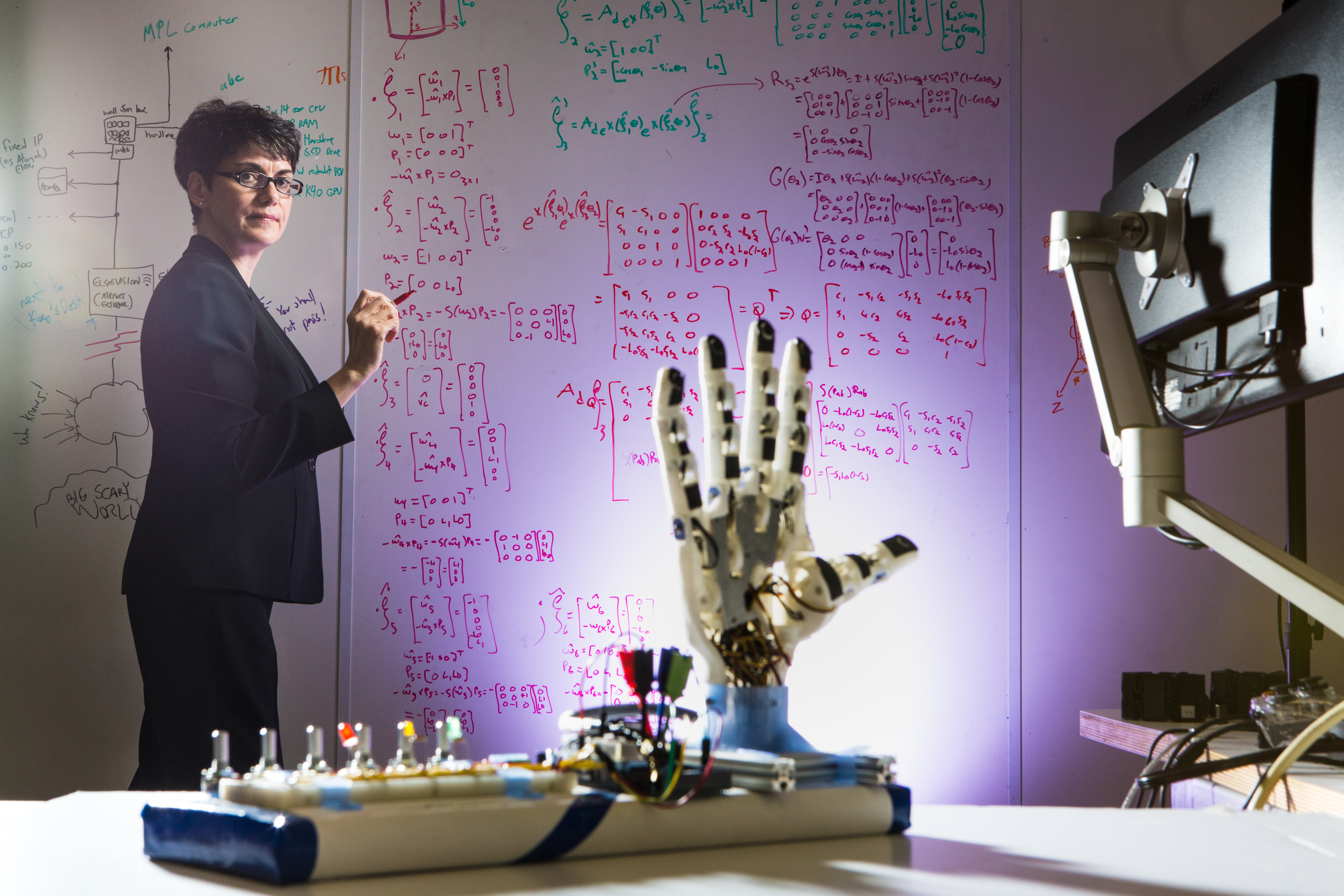
Vivian Mushahwar
Biomedical engineer
Professor in the Department of Medicine, Division of Physical Medicine & Rehabilitation
Director, SMART Network
A sock that can prevent blood clots from travelling to the lungs. A robot that assists rehabilitation, delivering care alongside a physiotherapist. Bionic underwear that prevents bedsores. A microimplant that helps paralyzed people stand and walk again. A holographic doctor that can provide care in remote communities.
They sound like inventions born in a Marvel comic book science lab, but these innovations and more devices like them come from University of Alberta researchers.
In high-tech headquarters at the U of A's Katz Group Centre for Pharmacy and Health Research, the Sensory Motor Adaptive Rehabilitation Technology (SMART) Network sees more than 90 of these researchers working together as a team.
"We focus on making the solution-be it a wearable device, an artificial limb or even an implanted microdevice-feel and behave as though it is part of the person and not just an artificial entity," said Vivian Mushahwar, director of the SMART Network. "We want an artificial limb to respond seamlessly to the will of the user and to let the person feel how the limb is moving and what it is touching."
Today, the translation of a scientific idea into a practical real-world application can happen faster than ever before, because electrical engineers, computer scientists, biologists, surgeons, nurses and rehabilitation specialists are all working together to better understand how the nervous system, brain and spinal cord work. The benefit to patients is profound.
Taking part in research has given Edgar Jackson his life back
When a motorcycle accident in 1998 left Edgar Jackson paralyzed from the neck down, the first thing that went through his mind was, "How am I going to be able to take care of my wife and two young daughters?"
After more than six months in the University of Alberta Hospital and Glenrose Rehabilitation Hospital, Jackson was contacted by the Canadian Paraplegic Association (now Spinal Cord Injury Alberta) and connected to University of Alberta research teams working with persons with significant injuries in the spinal cord. He's since been a volunteer research participant in numerous U of A studies for more than 17 years.
"I was able to walk my youngest daughter down the aisle at her wedding. My girls were 11 and 14 when I was injured and what's the one thing every father of a daughter dreams about doing?" said Jackson. "It gives others reason to have hope for the future after a devastating injury. The people that work at the U of A in the SMART Network are making Edmonton and the world a better place through their research."
The team leveraged the initial seed funding into an additional $40 million from public funding agencies, private industry, clinical centres and charitable organizations.
The new SMART Network facility officially opened in January 2017, thanks to $8 million in funding from the Canada Foundation for Innovation, Alberta Innovates and Alberta's Ministry of Economic Development and Trade.